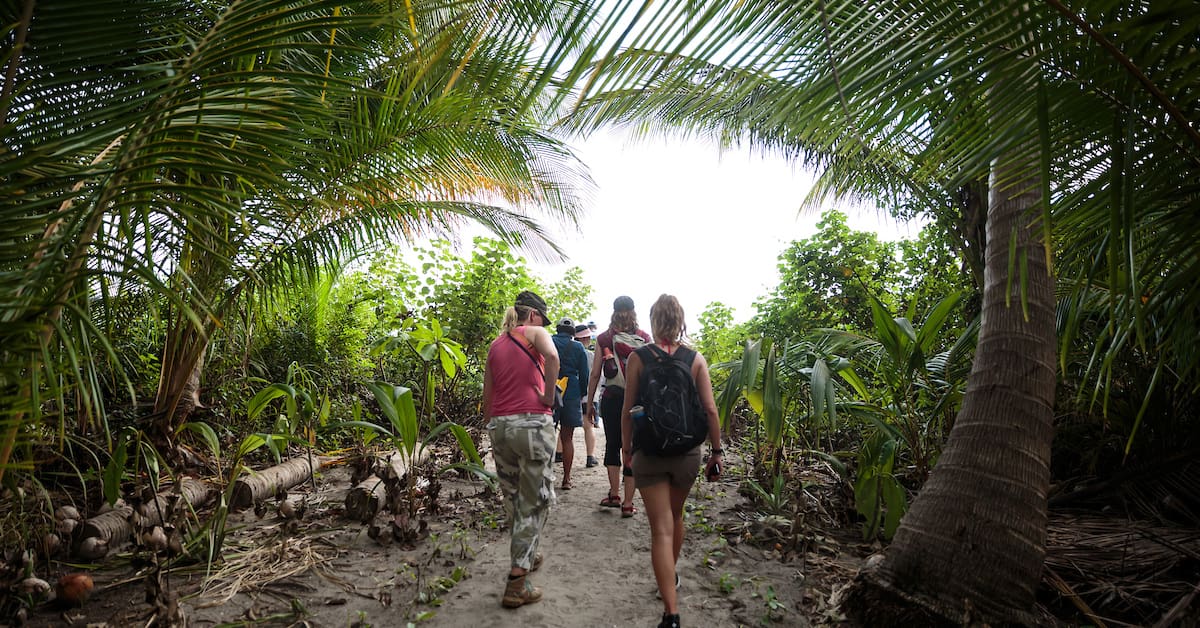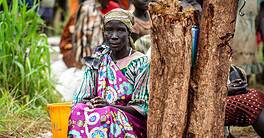Central Americans are eager to welcome tourists again.

From extended visas for digital nomads, to the decision to move public holidays to Mondays, to a prompt acceptance of the International Air Transport Association’s (IATA’s) new Travel Pass app—which provides verification of passengers’ Covid-19 health status while informing passengers on what tests, vaccines and other measures they require prior to travel—Central America has been inventive in supporting one of its major industries. The chances are that when post-pandemic international travel resumes, it will benefit from the fashionable trend of ecotourism.
Hard hit by Covid-19, Central American nations are betting on a recovery of international tourism to boost their virus-depressed economies. The high vaccination rates in the US bode well for the region’s desire to jump-start an industry that was almost wiped out in 2020.
The seven countries making up the region—Belize, Costa Rica, El Salvador, Guatemala, Honduras, Nicaragua and Panama—expect ecotourism to grow in importance after the pandemic; and they aspire to be green, sustainable playgrounds for Americans and Europeans.
Panama and Costa Rica lead the way, due to their more concrete policies to support tourism and to their lower crime rates.
With better infrastructures, both countries jumped on the new pandemic opportunity by offering digital nomads special visa programs similar to those offered by some of their Caribbean neighbors. This new class of semi-residents with high spending power might be eager to enjoy good weather, low-cost living and beautiful locations.
“International travel remains uncertain amid the race to get vaccines and the surge of new variants of the virus in some countries. However, a new outlook for the digital-nomad lifestyle is looking up: from working remotely from different places around the world, posting enviable photos on Instagram of an incredible life, to experiencing an authentic cultural adventure,” says Iván Eskildsen Alfaro, general administrator of the Tourism Authority of Panama.
Panama has already approved an 18-month visa program that can be requested by anyone able to demonstrate an income flow of $3,000 per month, or $4,000 if family is to be included on the visa. Costa Rica has a similar project, which its legislative assembly is expected to approve shortly.
The regional economies will need more than an influx of digital nomads to compensate for the tourism business lost due to the pandemic. In 2020, the region saw a decline in tourism and travel as a proportion of GDP that was greater than the world’s average. According to the World Travel and Tourism Council (WTTC), a private organization that promotes and fosters tourism globally, the sharp fall in international tourism particularly affected Panama, El Salvador and Costa Rica.
“These countries’ decline in tourism’s contribution to GDP was stronger than the world average because they have a stronger dependence on international tourism, which took a significant hit with the Covid pandemic,” says Nejc Jus, head of research at the WTTC.
For Panama, its decline was a whopping 68% versus a world average of 49.1%. Meanwhile, El Salvador’s decline was 58.3%, Costa Rica’s decline was 56.2% and Guatemala’s decline was 54.7%. Nicaragua and Honduras each suffered a 48.3% decline. In Guatemala and Nicaragua, which are still paying the cost of their civil wars, international tourism plays a far more limited role.
With the Covid-19 vaccination campaign underway, some countries are seeking an increase in visitors from abroad. “We may see a significant improvement, and it is something we are hoping for,” says Jus. “Last year has been tough for a lot of Caribbean islands and Central American countries, but this year we are hoping it will be different.”
Signs Point to Return
Frontier Airlines announced in April that it would resume service starting in July. In May, Costa Rica had the best number of arrivals since the pandemic began, according to Gustavo Segura Costa Rica’s minister of tourism. “All the airlines serving Costa Rica from the US have returned; and vaccinations around the world, particularly in the US, are very positive news for tourism in Costa Rica,” he says. “Costa Rica is a safe option, given that most of the country’s experiences are found in nature.”
In May 2021, Costa Rica had a total of 76,550 arrivals from Canada, Mexico and the US versus 298 in May 2020 and 116,141 in 2019 from North America alone—and 3,803 and 211,598 respectively in those months from all countries, according to Ministry of Tourism data.
After creating safety protocols for different tourism activities, the nation took the controversial step of no longer requiring a negative polymerase chain reaction test to enter the country, which began on October 26, 2020. The government also moved four national holidays to Mondays, creating several long weekends to boost domestic travel.
Progress in the vaccination campaign remains a key element in the resumption of tourism. “We are in a reopening stage, with actions that send a positive message to the world, with the recovery of the post-pandemic tourism industry as well as the progress of the vaccination program,” says Panama’s Eskildsen, adding that the country hopes to reach herd immunity sometime in the second half of the year.
Panama, which recently implemented the IATA’s Travel Pass, is also in the middle of implementing more than 50 projects to boost tourism in eight regions, he added. The plans include $100 million of funding from the Inter-American Development Bank on extensive public infrastructure and tourism experiences.
The isthmus nation is designing and implementing land use plans; optimizing public spaces, services, research and designs; upgrading trails, training, entrepreneurship programs and connectivity. These programs aim to improve the experience of tourists visiting Panama and make the country more competitive, better known and positioned as a world-class sustainable destination, according to Eskildsen.
“Tourism is seen in the country as the industry that can help the economy grow the fastest; and as such it is receiving strong support from the government, helping in turn to stimulate all its components, including hotels, airlines, restaurants, purchases and consumption, and services in general, resulting in a greater reactivation of jobs for Panama,” he adds.
In Belize, bookings for this coming December are also encouraging, a player in the industry says. “The recovery from the pandemic is projected to be protracted. Tourist arrivals remain subdued but are expected to pick up in late 2021 when vaccines become more widely available in advanced countries,” note the authors of the June 7 International Monetary Fund Article IV Consultation with Belize.



